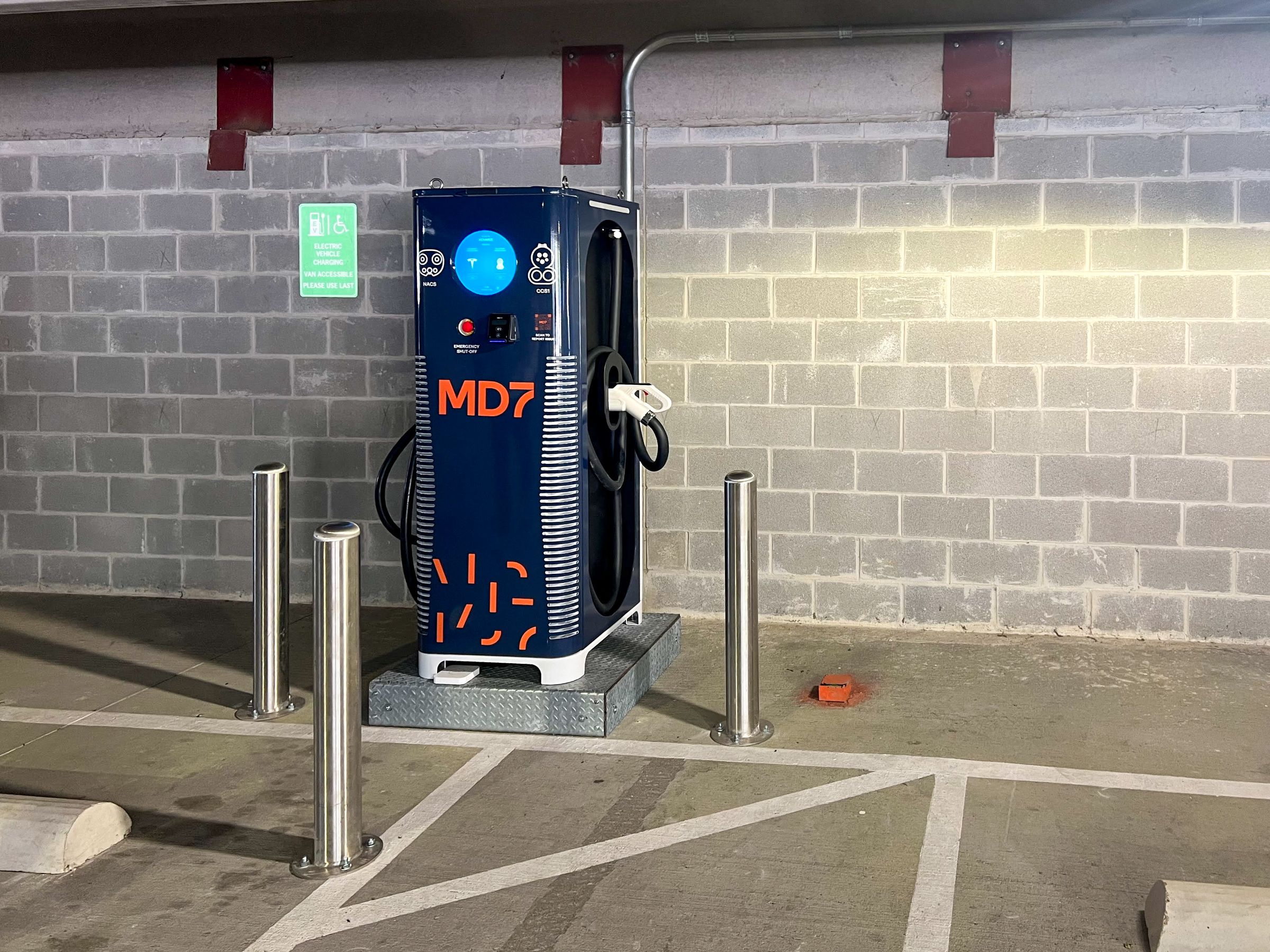New Requirements Facilitate Wireless Infrastructure Development
By Lynn Whitcher, Cynthia Hanson, Daniel Goodrich, and Benjamin Estes
DOCTORS NOW USE WIRELESS TECHNOLOGIES to support patient care; smart parking meters help us find and pay for parking; and we can get driving directions in our cars with real-time traffic updates. Wireless communication has become a critical infrastructure, alongside water, gas, and electricity. Despite the recent rise of wireless technology, its connectivity relies on the old legal principles of real estate. To satisfy the fast-growing demand for connectivity, major wireless carriers such as AT&T, Sprint, T-Mobile, and Verizon must not only maintain but continue to expand an infrastructure of cell towers and other telecommunication facilities that occupy land.
Wireless communication is developing so quickly that even a recent basic overview[1] of the various land use requirements of cell tower siting and network infrastructure is due for an update. Notwithstanding a congressional mandate provided in 2012,[2] the process of wireless facility siting has remained burdensome and time consuming. Accordingly, more recent developments at the federal and state level have further streamlined the siting process. These new developments determine what types of wireless projects qualify for streamlined treatment, distinguish clear areas from gray, identify the law’s limitations, and propose an outlook on the future of wireless deployments under the new laws.[3]
Much like zoning for any other real estate development, wireless facility siting is primarily handled at the state and municipal level. However, federal law may sometimes preempt conflicting municipal law. For example, the 2012 Spectrum Act provides that a local municipality “may not deny, and shall approve” an “eligible facilities request” for the modification of an “existing” wireless “tower” or “base station” that does not “substantially change” the physical dimensions of the tower or base station.[4]
At first blush, the Spectrum Act offers favorable relief to wireless siting applicants seeking certain entitlements from any given municipality by providing the municipality “may not deny, and shall approve” an application over which the municipality previously may have enjoyed the ability to exercise discretion. Indeed, when a municipality’s zoning code requires a lengthy or discretionary process, this federal law may mandate the municipality take a different course of action.
However, many of the act’s terms, such as “eligible facilities request,” “existing,” “tower,” “base station,” and “substantially change,” were not defined. The wireless industry applicants and the local jurisdictions often did not agree on when the act was applicable.[5] Recently, the FCC, which is charged with ensuring that communication infrastructure can be rapidly and efficiently deployed, provided the wireless industry[6] with relief by issuing an order (FCC Order) and rulemaking designed to significantly streamline certain wireless infrastructure deployments.[7]
Eligible Facilities Request
The Spectrum Act provides that an “eligible facilities request” refers to any project that involves the collocation, removal, or replacement of transmission equipment.[8] The FCC has clarified that the act’s wireless siting rules—often referred to as Section 6409 provisions— may apply to a wide range of projects, including antenna modifications, the addition of new fiber optic lines and generators, the placement of the first wireless facility on an existing building or other structure, and even certain tower enhancements.[9] These types of site enhancements are critical to ensuring wireless facilities are updated to keep up with new mobile device technology, ever-expanding consumer demand, and public safety needs. The wholesale removal and replacement of a tower, however, falls outside the scope of Section 6409.
“Existing” wireless towers or base stations refer to infrastructure that has been previously reviewed and approved under the applicable local zoning process or that has received another form of affirmative state or local regulatory approval, such as from the state public utility commission.[10] Facilities placed as a matter of right, those not required to undergo a siting review at the time constructed, or facilities deployed without proper review do not qualify as “existing” towers for the purposes of Section 6409.[11]
Section 6409 does apply to modifications and additions to 1) “towers,” defined as any structure built for the sole or primary purpose of supporting an FCC-licensed or authorized antenna and its associated equipment, regardless of whether the antennas and associated equipment are located on the tower and regardless of whether the tower has actually been constructed, and 2) a wide variety of “base station” structures, such as buildings, water tanks, utility poles, or light standards, so long as the structure supports antennas or associated equipment at the time the application is filed.[12]
In determining whether a project will result in a “substantial change,” six factors will be evaluated: 1) changes in height, 2) changes in width, 3) increase in the number of equipment cabinets, 4) deployment or excavation activity outside the existing footprint of the site, 5) defeat to existing concealment measures, and 6) compliance with the conditions of prior approvals.[13] In order to ensure streamlined treatment under Section 6409 review, applicants would be well served to provide the jurisdiction with detailed site plans that clearly establish that the proposed project meets the “no substantial change” test.
The first four substantial change factors are empirically measureable and are supported with significant and relatively clear FCC guidance. However, the determination of whether a project will defeat concealment measures or whether there is compliance with prior conditions of approval may be open to the subjective evaluation of a municipality.
Federal Limitations
Aside from clarifying when Section 6409 applies, the FCC has also issued important guidance about 1) what information a municipality can require as part of the zoning application, 2) how long the municipality can review it, and 3) what happens when the municipality does not meet the review deadline. When reviewing a zoning application under Section 6409, the municipality may only seek documentation necessary to confirm whether the project qualifies for treatment under the section.[14] For example, wireless carriers cannot be asked to provide business case justifications supporting the need for the project. A municipality will, however, continue to maintain its ability to condition approval on compliance with generally applicable building, structural, electrical, and other similar health and safety codes.[15] Projects must also still comply with otherwise applicable federal requirements.[16] Under what is known as the “shot clock” rule, municipalities reviewing zoning applications for wireless facilities are required to act upon the application within a reasonable time after the request is submitted.[17] Under the shot clock requirements, reasonable response times have historically been defined as 90 days for site modifications and collocations and 150 days for a new cell site, unless otherwise agreed between the parties.[18]
The FCC clarified that the 90- or 150-day shot clock timelines apply only to zoning applications falling under Section 332 of the Telecommunications Act of 1996[19] and imposed a new, shortened shot clock period of 60 days for the review of applications falling under Section 6409.[20] If a jurisdiction fails to rule on an application covered by Section 6409 within the new 60-day shot clock period (accounting for tolling), the request will be deemed granted.[21] This approval only takes effect after the applicant submits written notice to the municipality that the approval time period has elapsed and during that time the municipality did not take definitive action on the zoning application.[22]
In the event the municipality disagrees with this determination, the burden shifts to the municipality to seek relief in the courts rather than the applicant having to seek this remedy, as is the case with zoning applications submitted under Section 332. This “deemed granted” remedy alone may result in a significant acceleration of deployment projects and is a welcome relief for carriers, most of which are reluctant to sue the local authorities for every violation of the shot clock.
In addition to imposing a new shot clock for Section 6409 applications, the FCC also clarified how and when the shot clock applies. First, the shot clock begins to run when an application is submitted, not when it has been deemed complete by the municipality.[23] Second, in the event that a municipality deems the application incomplete, the municipality has 30 days to request the missing information, and it must also identify the code section or publicly stated requirement that requires the missing information.[24] Third, when the applicant resubmits the requested application materials, the local authority has 10 days to identify which previously requested pieces of information are still missing, and the municipality cannot request new information outside the scope of its original request.[25]
This prescribed shot clock scheme prevents municipalities from asserting serial requests for supplemental documentation and information, which would effectively string together multiple tolling periods to artificially elongate the shot clock approval timeframe. The FCC also declared that the shot clock will run regardless of any local moratorium on zoning approvals of wireless facilities.[26] These shot clock administration guidelines apply to zoning applications submitted under either Section 6409 or Section 332.
Unfortunately, the FCC stopped short of changing the effect of a municipality’s failure to meet the Section 332 shot clock timelines. Any disputes regarding a local authority’s failure to meet the Section 332 shot clock must be resolved in court. Also, the municipality maintains its right to request extraneous project information—for example, traffic studies, development impact reports, or copies of the underlying lease or other owner consent documents.[27]
DAS and Small Cells
The FCC has confirmed that the deployment of smaller-scale facilities known as distributed antennas systems (DAS) and small cells may qualify for the protections of Sections 332 and 6409.[28] Further, in light of the smaller nature and therefore lessened impact of these installations on the environment, the FCC has created new categorical exclusions from environmental and historical review for many of these minimally obtrusive facilities.
Qualifying interior facilities, collocations, and facilities in the rights-of-way will no longer need either an Environmental Assessment (EA) or Environmental Impact Statement (EIS) as to the potential impacts of the project under the National Environmental Policy Act of 1969 (NEPA).[29] Specifically, the FCC extended the existing NEPA categorical exclusions for antenna collocations on buildings and towers to include equipment associated with the antennas, such as wiring, cabling, cabinets, backup power equipment, and collocations in a building’s interior.[30] This NEPA categorical exclusion for collocations was also extended to collocations on structures other than buildings and towers.[31] Further, the FCC created a categorical exclusion for projects that will not result in a substantial increase in size over the existing utility or communications uses of 1) the public right-of-way designated for communication towers, 2) above-ground utility transmission lines, or 3) any associated structures and equipment.[32]
Similarly, qualifying collocations on utility poles and transmission towers[33] (but not light standards) and qualifying collocations on buildings and certain nontower structures[34] will not require consultations with the State Historic Preservation Officer (SHPO), Tribal Historic Preservation Officer (THPO), or Advisory Council on Historic Preservation (ACHP) as otherwise required under the National Historic Preservation Act of 1966 (NHPA, also known as Section 106).[35] In order to qualify for this exclusion and presuming no other exclusions otherwise apply, the collocated equipment, when measured with any other wireless deployment on the same structure, must meet certain size and ground disturbance limitations.[36] Lastly, any structure can now qualify for Section 106 exclusion, regardless of age—even if older than 45 years.[37]
Finally, the FCC ruled that the existing exclusions for certain collocations on buildings under FCC programmatic agreements are now extended to collocations inside buildings.[38] The FCC has already begun discussions about broader reforms to expedite applicable DAS and small cell wireless facilities deployments and relieve all stakeholders of unnecessary and nonproductive obligations. These discussions are anticipated to conclude in 18 to 24 months, at which time new reforms will be announced.
The FCC Order has been challenged by Montgomery County, Maryland; the California cities of Los Angeles, San Jose, Redwood City, and Ontario; the city of Bellevue, Washington; the city of McAllen, Texas; and the Texas Coalition of Cities for Utility Issues in an appeal pending before the Fourth Circuit Court of Appeals.[39] These petitioners have limited their challenge to those portions of the FCC Order implementing Section 6409. Petitioners claim the FCC overreached its rulemaking authority, resulting in a violation of the Tenth Amendment. A stay pending appeal was not sought by the petitioners, and all parts of the FCC Order remain in effect.
State Law
While the FCC Order imposed a “deemed granted” remedy for certain collocations and minor modifications that do not result in a substantial change (i.e., eligible facility requests), the commission was unwilling to extend this remedy to other collocations, new sites builds, or major modifications. However, the California State Legislature has now filled this gap by extending a “deemed granted” remedy to these siting applications as well. Following the FCC Order, California State Assemblyman Bill Quirk introduced Assembly Bill 57, addressing land use approvals of wireless telecommunication facilities.[40] The bill was passed by large majorities in the Assembly and the Senate despite intense lobbying efforts by local governments and their affiliated organizations.
Effective January 1, 2016, AB 57 added Section 65964.1 to the Government Code, which provides that wireless communications facility collocation or siting applications not acted on in a dispositive manner by a city or county within the reasonable time periods established by the FCC (90 days for collocations and 150 days for other applications[41]) will be “deemed approved.”[42] This new law would allow a “deemed approved” remedy only if all public notice requirements regarding the application for the wireless telecommunications facility have been met,[43] and the applicant has provided a notice to the city or county that the reasonable time period has lapsed.[44] The applicable review time frame can be tolled to accommodate timely requests for information required to complete the application or by mutual agreement between the applicant and the local government.[45] Section 6409 “eligible facility requests” for minor modifications to existing facilities, described above, fall outside the projects covered by AB 57 and remain subject to the new FCC 60-day shot clock. AB 57 also does not extend to telecommunication projects proposed on fire department facilities.[46] Once a siting application has been deemed approved, the city or county will have 30 days to file a court action challenging the deemed approved status and stop the construction.[47] By enacting this legislation, California joins with a growing number of other states—including Georgia, Indiana, and Iowa—in passing laws aimed at accelerating upgrades to wireless infrastructure in an effort to meet the demands of an evergrowing base of consumers.[48]
In light of the framework established by the new federal guidance and new state law, wireless carriers will be closely tracking the date siting applications are submitted, the date notifications of application incompleteness are issued, and any shot clock tolling periods and expirations. Carriers will be pushing to move forward with siting applications that have been deemed granted or approved under federal or state law. However, it may take considerable time for municipalities to update their codes and application forms to align with the new requirements. In the meantime, certain progressive municipalities work cooperatively with applicants to achieve a solution that not only accommodates the streamlined approach required by law but also complies with municipal code as it relates to wireless deployments. For example, jurisdictions with codes that require public hearings for siting applications arguably falling under Section 6409 are endeavoring to hold the hearing and issue approvals within the 60-day shot clock period.
Although much progress has been made, much work remains to be done to meet the steadily growing demand for wireless communication infrastructure. Carriers and municipalities can work together to find solutions to support the efficient and balanced deployment of wireless infrastructure, which benefits not just the wireless industry but all who have come to rely on smartphones and other devices (such as those now found in cars) that employ wireless communication technology.
[1] See Lynn Whitcher & Cynthia Hanson, Tower Building, LOS ANGELES LAWYER 30-34 (Jan. 2014).
[2] 47 U.S.C. § 1455.
[3] See, e.g., In the Matter of Acceleration of Broadband Deployment by Improving Wireless Facilities Siting Policies, Report and Order, 29 F.C.C.R. 12865 (2014), 80 Fed. Reg. 1237, available at https: / /federalregister.gov/a/2014-28897 [hereinafter FCC Order]; 80 Fed. Reg. 1259.
[4] See Middle Class Tax Relief and Job Creation Act of 2012 (Spectrum Act), Pub. L. No. 112-96 § 6409(b), (c), 126 Stat. 156 (2012); 47 U.S.C. §1455(a)(1) (wireless facilities deployment).
[5] See Pub. L. No. 112-96 §6409, codified at 47 U.S.C. § 1455.
[6] The FCC ruling also has implications extending beyond wireless (including to public safety, broadcast, and WiFi).
[7] FCC Order, supra note 3.
[8] 47 U.S.C. § 1455(a)(2).
[9] See 80 Fed. Reg. 1249-52.
[10] See 47 C.F.R. § 1.40001(b)(5).
[11] See 80 Fed. Reg. 1251.
[12] See 47 C.F.R. § 1.40001(b)(1), (9).
[13] See 47 C.F.R. § 1.40001(b)(7).
[14] See 47 C.F.R. § 1.40001(c)(1).
[15] See 80 Fed. Reg. 1252.
[16] See 80 Fed. Reg. 1255.
[17] 47 U.S.C. § 332(c)(7)(B)(ii).
[18] 80 Fed. Reg. 1259 (In the FCC’s 2009 Declaratory Ruling, the commission interpreted a “reasonable period of time” under §332(c)(7)(B)(ii) to be 90 days for processing collocation applications and 150 days for processing applications other than collocations.).
[19] 47 U.S.C. § 332(c)(7).
[20] See 47 C.F.R. § 1.40001(c)(2).
[21] 47 C.F.R. § 1.40001(c)(4).
[22] 47 C.F.R. § 1.40001(c)(4).
[23] 47 C.F.R. § 1.40001(c)(3).
[24] 47 C.F.R. § 1.40001(c)(3)(i).
[25] 47 C.F.R. § 1.40001(c)(3)(iii).
[26] 47 C.F.R. § 1.40001(c)(3).
[27] See generally 47 U.S.C § 332(c)(7).
[28] See 80 Fed. Reg. 1260.
[29] See 80 Fed. Reg. 1239.
[30] See id.
[31] See 80 Fed. Reg. 1240.
[32] See 80 Fed. Reg. 1241.
[33] See 80 Fed. Reg. 1244; 47 C.F.R. § 1.1307(a)(4)(ii).
[34] Collocations on a building or other nontower structure are excluded from Section 106 review to the extent not otherwise already excluded if 1) there is an existing antenna on the building or structure, 2) antenna proximity requirements are met, 3) the new antenna(s) will comply with all zoning conditions and historic preservation conditions imposed on existing antennas that mitigate or prevent environmental impact (such as stealthing requirements), and 4) they meet ground disturbance requirements. These criteria apply to equipment collocated within a building as well as on its exterior. 80 Fed. Reg. 1243.
[35] See 80 Fed. Reg. 1243, 1245.
[36] 80 Fed. Reg. 1243.
[37] Id.
[38] 80 Fed. Reg. 1239.
[39] Montgomery County, MD v. United States, No. 15-1240 (Cons. No. 15-1284) (4th Cir. filed Mar. 6, 2015).
[40] A.B. 57, 2015-16 Reg. Sess. (Cal. 2015), available at http://www.legislature.ca.gov.
[41] See In re Petition for Declaratory Ruling, 24 F.C.C.R. 13994 (2009).
[42] GOV’T CODE § 65964.1(a).
[43] GOV’T CODE § 65964.1(a)(2).
[44] GOV’T CODE § 65964.1(a)(3)(A).
[45] GOV’T CODE § 65964.1(a)(1).
[46] GOV’T CODE § 65964.1(f).
[47] GOV’T CODE § 65964.1(a)(3)(B).
[48] See Mobile Broadband Infrastructure Leads to Development Act, GA. CODE ANN. §36-66B-1 (2014); Indiana Wireless Telecom munications Investment Act, IND. CODE §8-1-32.3 (2015); Iowa Cell Siting Act, H. File 655, 86th Gen. Assem. (2015) (enrolled).




